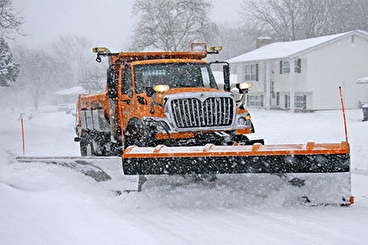Team recommends less expensive ways to control runoff from low-volume roads

Stormwater runoff from roads can contain an array of contaminants. Standard treatment methods are based on studies of urban roads with high average daily traffic (ADT) counts—tens of thousands and higher. Low-volume roads, in contrast, have rarely been studied.
To fill this knowledge gap, U of M researchers collected and analyzed stormwater runoff from low-volume rural roads to determine how contaminants compared to those of high-volume roadways. They found that overall, low ADT did appear to correlate with lower pollutant levels of solids, phosphorous, nitrate/nitrite, copper, and zinc.
Rural runoff may also contain pollutants from other sources, such as galvanized farm equipment. Models run by the researchers indicate that simpler mitigation practices, such as ditches and swales, can effectively control these pollutants and meet state standards.
Based on their findings, the researchers recommended ditches with swales as an effective
stormwater treatment for low-volume roads. This method is considerably less expensive to install and maintain than other best management practices. Agencies will be able to use the study’s data for their future stormwater permits.
Principal investigator: Professor John Gulliver, Department of Civil, Environmental, and Geo- Engineering. Sponsor: Minnesota Local Road Research Board.
Learn more: Study recommends less expensive ways to control runoff from low-volume roads, CTS Catalyst, April 2021
U researchers and Edina snowplow drivers team up to reduce salt in Minnesota’s waters

U of M researchers collaborated with the City of Edina on a research project that gathered data and created tools for reducing road salt contamination in Minnesota’s urban waters.
The first step in the project was to gain a better understanding of how chloride moves from roads to watersheds. Researchers collected meltwater samples and measured variables including flow, temperature, and chloride concentrations. They also took core samples from roadside snow piles for chloride testing.
A noteworthy finding is that chloride movement comes in short bursts during a handful of events spread across the year. During both winters studied, around 90 percent of the yearly chloride loading moved off the roads in under eight nonconsecutive days of large melt events—particularly “winter mix” events in which snow accumulates, melts, and freezes.
The researchers then developed scenario models to evaluate chloride movement throughout larger watersheds and created the Active Management Toolkit with a training guide and spreadsheet tools for agencies. The team also coordinated workshops with Edina public works staff to share data and knowledge for improving operations.
Principal investigator: Professor Larry Baker, Department of Bioproducts and Biosystems Engineering. Sponsor: Minnesota Local Road Research Board.
Learn more: U researchers and Edina snowplow drivers team up to reduce salt in Minnesota’s waters, CTS Catalyst, July 2021